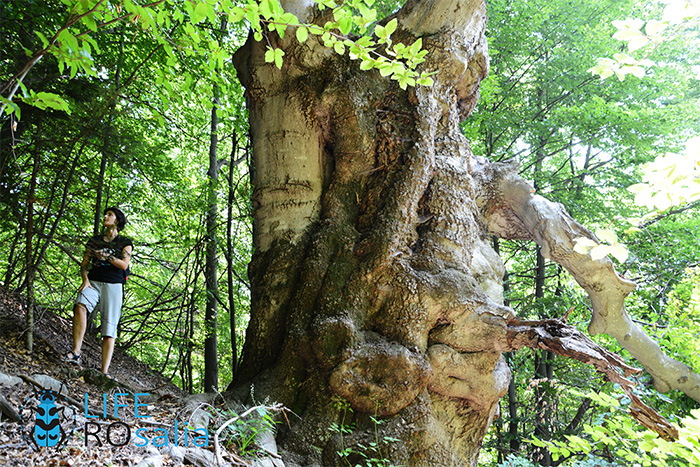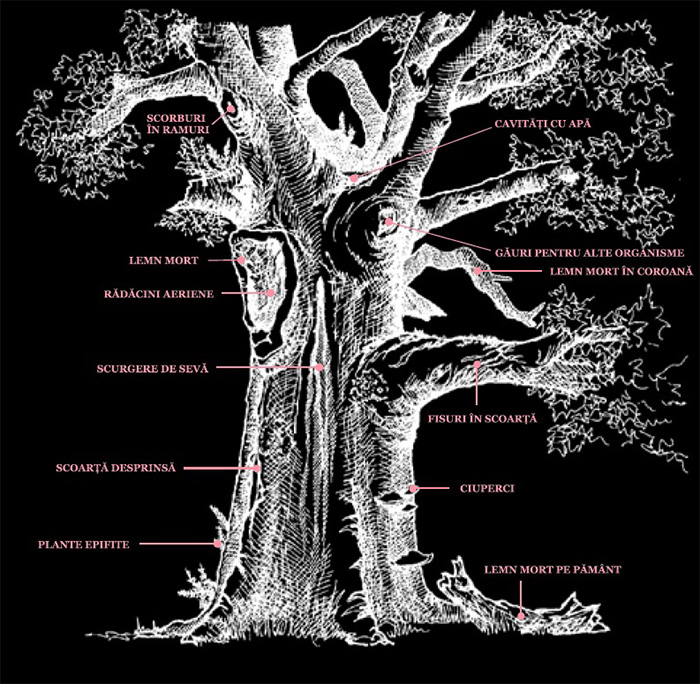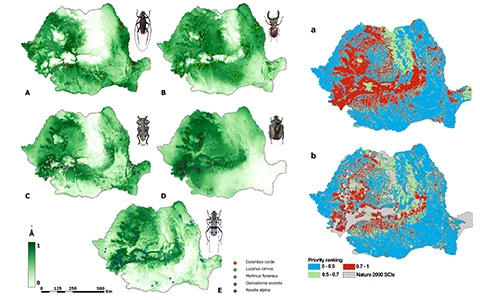What does the ideal tree look like for saproxylic insects?
Saproxylic invertebrates have certain characteristics and needs that differentiate them from other organisms:
-
• Many insects have an annual life cycle, which makes them vulnerable to „bad” years and habitat discontinuity. The larval stage, however, may be longer in some saproxylic species due to the poor nutritional quality of the food. The radish, for example, needs at least three years to reach maturity.
• Different life stages of the same species may require very different habitats and conditions. Adults of saproxylic species may feed on nectar and pollen in different locations than where they developed as larvae.
• Some species are highly specialized. Even in sites with large populations of veteran trees, it is unlikely to find many trees with the exact conditions that certain species need.

The ideal tree for saproxylic insects should have:
-
• Dead wood in the crown – dry wood provides support for a small but specialized range of species.
• Strips of rott – especially brown and soft white rott are very valuable.
• Holes and pits of various sizes, with different degrees of moisture and decomposition – for example, some full of water and others dry and with humus
• Partially decayed wood, hollows and cavities created by other species (e.g. birds)
• Sap leakage, where the sap drips to the surface of the trunk
• Fungal sporiferous bodies as well as fungi under the bark
• Injured bark (for example following a lightning strike or from mechanical knocks)
• Stubs of broken branches where invertebrates can have access to lay eggs
• The existence of nectar and pollen sources nearby
• Fallen branches left on the ground near the tree in partial shade
• Living woody tissue, showing that the tree is still alive – it will continue to grow and produce deadwood in the future as well as shade for existing deadwood.

Illustration and text taken from Read, H., (2000). Veteran Trees: A guide to good management
The photo was taken in the Cenarul Forest Natura 2000 Site






